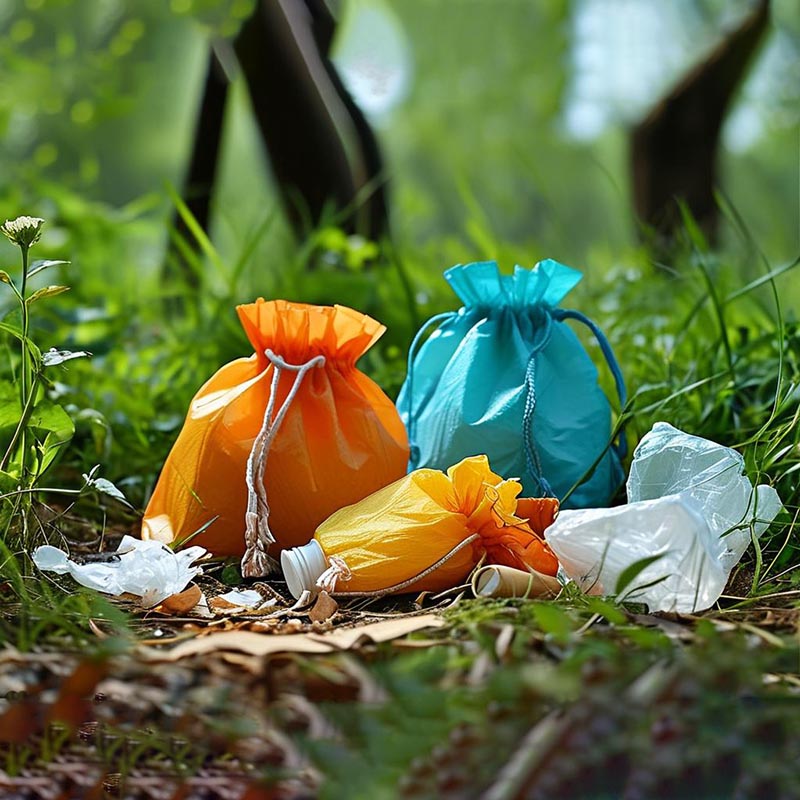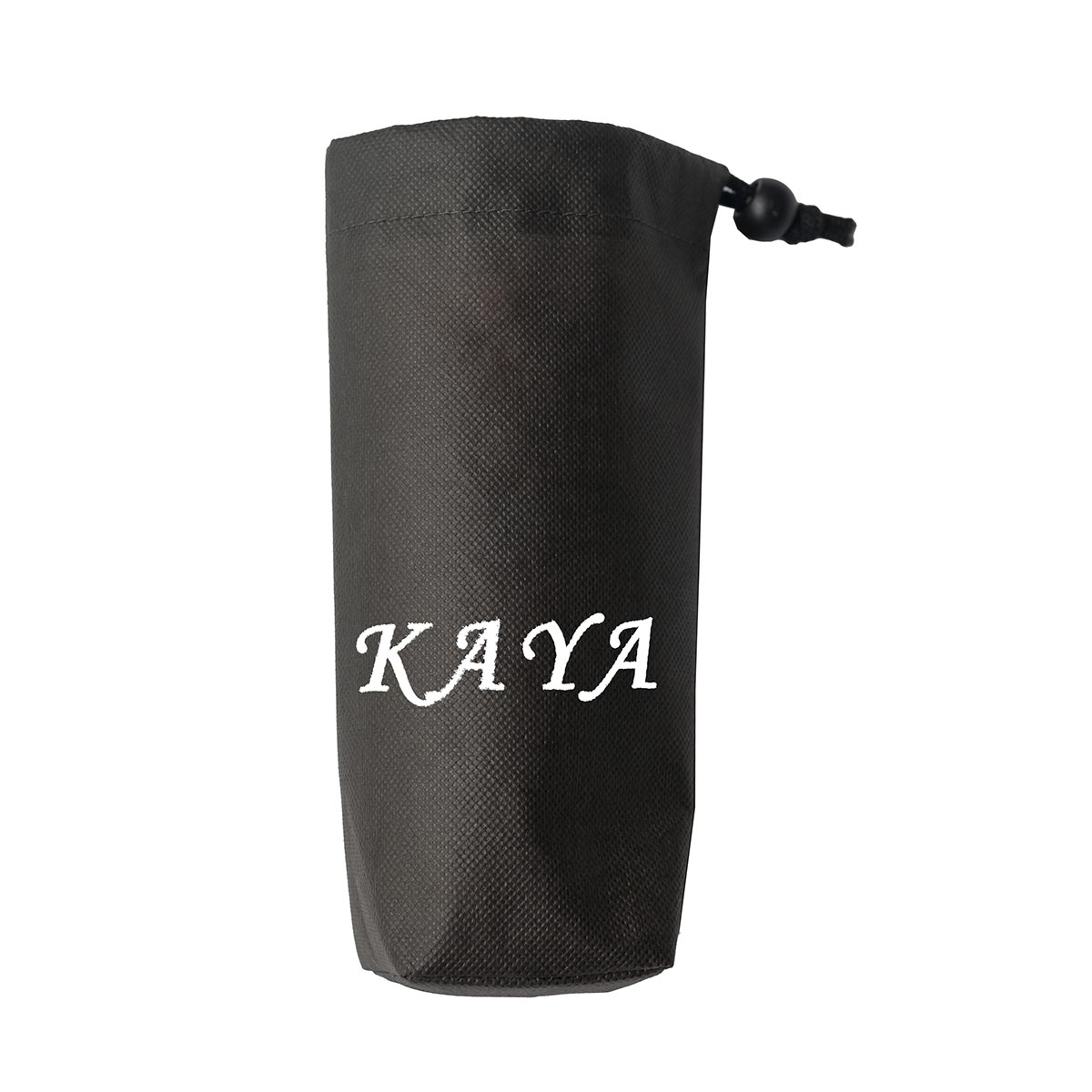Are Drawstring Bags Really Eco-Friendly? A Decomposition Reality Check Across Materials
As environmental awareness continues to grow, drawstring bags have emerged as popular alternatives to plastic packaging. But are those marked “biodegradable” truly capable of returning to nature? Surprisingly, lab tests reveal a counterintuitive reality: a drawstring bag made from the same material can fully degrade in three months in an industrial composting facility, yet leave visible fragments even after two years when buried in a backyard. This discrepancy stems not only from the material itself, but also from a complex interplay of temperature, humidity, and microbial presence. When eco-friendly bags end up in regular trash bins, their green promises may turn into a green illusion. Based on 12 months of field data, this article analyzes the real-world decomposition performance of common materials—and exposes critical blind spots across the product life cycle, from manufacturing to disposal.
1. Misconceptions That Undermine Decomposition Performance
1.1 Temperature Comparison (With On-Site Test Images)
- High-temperature environment (55°C incubator): PLA began fragmenting after 60 days.
- Ambient temperature (25°C, potted soil): The same batch only showed surface powdering after 180 days.
1.2 Humidity Sensitivity Test
- Composting during the rainy season was 2.3× faster than in dry climates.
- Bamboo fiber bags developed mold in humidity above 70%, slowing degradation.
1.3 Microbial Compatibility
- Compost accelerants reduced PLA degradation cycles by 35%.
- Common misconception: coffee grounds in compost may inhibit beneficial microbial activity.
2. Busting the Myth: Biodegradable ≠ Bury and Forget
- Temperature determines speed: Industrial composting (high heat) vs. backyard composting (ambient conditions).
Example: PLA decomposed <50% in 2 years in home composting but >90% in 3 months industrially.
- Safety first: Are degradation residues free of pollutants? (Heavy metal & microplastic testing is essential.)
- The infrastructure gap: Only 23% of global cities have industrial composting—buying the wrong bag turns “eco” into waste.
3. Decomposition Comparison: 4 Common Drawstring Bag Materials
(With real-world factory case studies)
| Material Type |
Main Components |
Industrial Compost Time |
Home Compost Time |
Best Use Scenarios |
| Traditional PP Nonwoven |
Polypropylene |
Not degradable |
Not degradable |
Short-term reuse |
| PLA Composite |
Corn starch + Polylactic Acid |
3–6 months |
Over 2 years |
Regions with recycling systems |
| 100% Cotton Canvas |
Natural cotton |
1–2 months |
3–6 months |
High-end custom orders |
| Bamboo Fiber Blend |
Bamboo pulp + PLA |
2–4 months |
1–2 years |
Humid climate applications |
4. How Consumers Can Spot Truly Eco-Friendly Bags
- Check certifications:
- ✅ EU Standard EN13432 (for industrial composting)
- ✅ U.S. BPI certification
- ❌ Beware vague “biodegradable” claims without detail
- DIY tests:
- Cut fabric into pieces, bury in a flowerpot, and check for brittleness or holes after 30 days.
- Soak and stir in warm water—natural fibers will cloud and layer over time.
5. Sustainable Practices in Manufacturing
- Drawstring optimization: Replace synthetic cords with cotton for full degradability.
- Ink choices: Water-based inks degrade 3× faster than oil-based inks.
- Scrap handling: Partner with local farms to compost offcuts—1.2 tons processed monthly.
- Storage management:
- PLA materials must be kept in the dark (UV light reduces tensile strength by 30% in 60 days).
- Maintain warehouse humidity below 50% to avoid premature starch-based breakdown.
6. Scenario-Based Purchasing Guide
6.1. Supermarkets
- Promotional periods: PP material + reuse prompts
- Organic produce section: Coffee mesh bags + return-for-reward recycling programs
6.2. Trade Shows
- High-end forums: Cotton/linen bags with seed-embedded coating (germinates after burial)
- Tech expos: PLA bags with glow-in-the-dark ink + mini app to track degradation
6.3. Schools
- Cafeteria utensil bags: Bamboo fiber + antibacterial treatment
- Graduation gifts: Recycled PET + embroidered alumni emblems
7. Practical Advice for Buyers
- Export to Europe: Choose PLA + starch blends, and confirm local composting policies.
- For promotional campaigns: Recommend PP with strong messaging encouraging reuse.
- For premium gifting: Go with cotton or linen, and include a biodegradable planting guide.
8. Conclusion
The true environmental value of drawstring bags lies in the precise match between material properties and disposal conditions. Tests show that in regions without industrial composting, PLA may degrade more slowly than traditional cotton or linen. Meanwhile, “fast-degrading” bamboo fiber bags may mold prematurely in high humidity. Consumers must stay alert to the absolute claims made on “biodegradable” labels and opt for products aligned with their local waste management systems. For manufacturers, incorporating degradation risk assessments during material selection and production can prevent sustainability promises from falling flat. Only when product design, usage guidance, and infrastructure form a cohesive loop can biodegradable packaging fulfill its eco-friendly promise.




 We like to do design according to all the customers' requirements, or offer them our new designs. With strong OEM/ODM capabilities, we can fill your sourcing demands.
We like to do design according to all the customers' requirements, or offer them our new designs. With strong OEM/ODM capabilities, we can fill your sourcing demands.